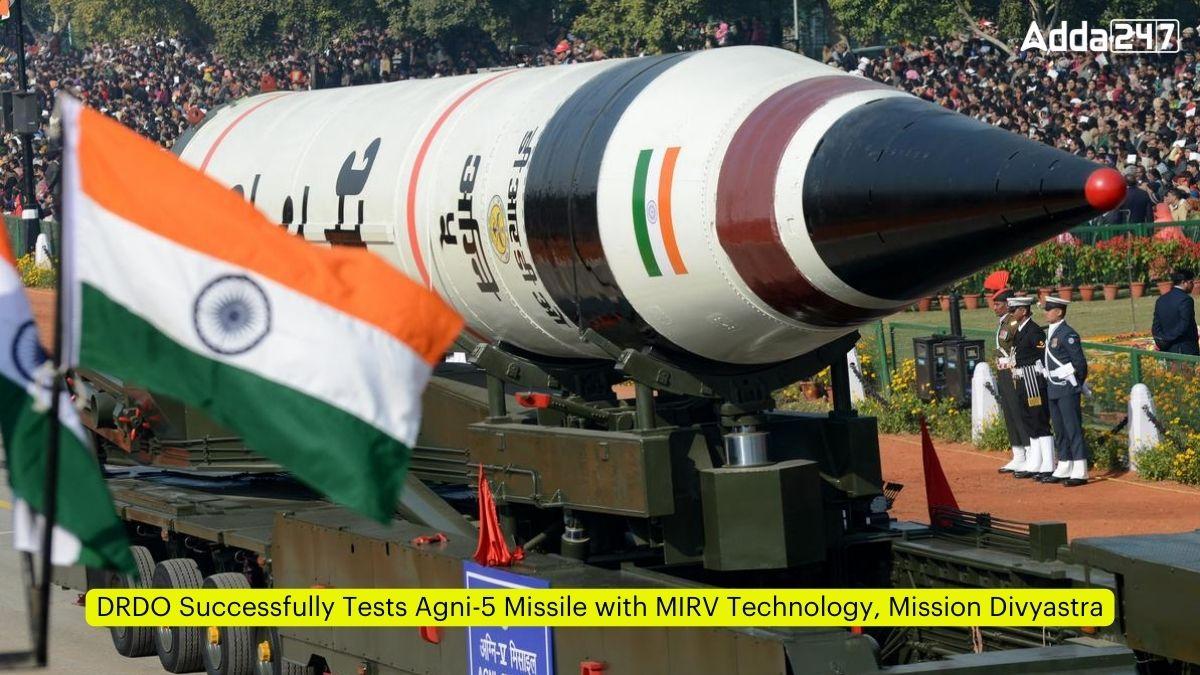Prime Minister Narendra Modi announced that the Defence Research and Development Organisation (DRDO) has successfully conducted the maiden flight test of the locally developed Agni-5 missile with multiple independently targetable re-entry vehicle (MIRV) technology. This new capability allows the weapon system to deliver multiple nuclear warheads against different targets spread across hundreds of kilometers, further enhancing India’s strategic deterrence capability.
Joining Exclusive Club
The test, codenamed “Mission Divyastra” (divine weapon), propels India into an exclusive league of countries that possess the capability to deploy MIRV missile systems, including the United States, the United Kingdom, France, Russia, and China.
Long-Range Missile Test Preparations
Last week, India issued a notice for a no-fly zone over the Bay of Bengal and the eastern Indian Ocean region, indicating the country’s intention to carry out a long-range missile test. Reports suggest that China may have been tracking the missile test after receiving the no-fly zone notification.
Agni-5 Missile Capabilities
The Agni-5 missile, which uses a three-stage solid-fueled engine, has a range of more than 5,000 kilometers. It is equipped with indigenous avionics systems and high-accuracy sensor packages, ensuring that the re-entry vehicles reach their target points within the desired accuracy.
While the exact number of warheads the MIRV version of Agni-5 can carry is not officially disclosed, military scientists estimate it to be four to five. The warheads can be propelled independently, with targets 200-500 kilometers apart.
Nuclear Strike Capabilities
India can carry out nuclear strikes with fighter planes, land-launched missiles, and from the sea. The country completed its nuclear triad in 2018 when the indigenous nuclear-powered ballistic missile submarine, INS Arihant, successfully completed its first deterrence patrol.
Chinese Naval Activity Monitoring
The missile test coincided with the presence of two Chinese “research and survey vessels” operating in the waters around India. The Xiang Yang Hong 01 vessel was likely monitoring the Indian test from the Bay of Bengal, while the Xiang Yang Hong 03 is conducting research in the Indian Ocean between Sri Lanka and the Maldives.
Indian officials are closely monitoring these developments, as the equipment on these vessels, including powerful sonar systems and sensors, can gather valuable data for submarine and anti-submarine operations.
Potential Submarine-Launched Missile Test
Reports suggest that India may also carry out a test of its submarine-launched ballistic missile K-4, which has a range of 3,000 kilometers.
India’s successful test of the Agni-5 missile with MIRV technology, codenamed Mission Divyastra, is a significant achievement that strengthens the country’s strategic deterrence capability. The test showcases India’s indigenous missile development capabilities and places it in an exclusive club of nations with MIRV technology. However, the presence of Chinese research vessels in the region has raised concerns about potential monitoring activities, highlighting the complex geopolitical dynamics surrounding such tests.
Important takeaways for all Competitive Exam:
- DRDO founded: 1958;
- DRDO Headquarters: DRDO Bhavan, New Delhi;
- DRDO Agency executive: : Sameer V. Kamat, Chairman, DRDO.



 GRSE's Seventh ASW Ship, ‘Abhay’, Jo...
GRSE's Seventh ASW Ship, ‘Abhay’, Jo...
 Chanakya Defence Dialogue 2024 Culminate...
Chanakya Defence Dialogue 2024 Culminate...
 India-Germany Maritime Partnership Exerc...
India-Germany Maritime Partnership Exerc...

